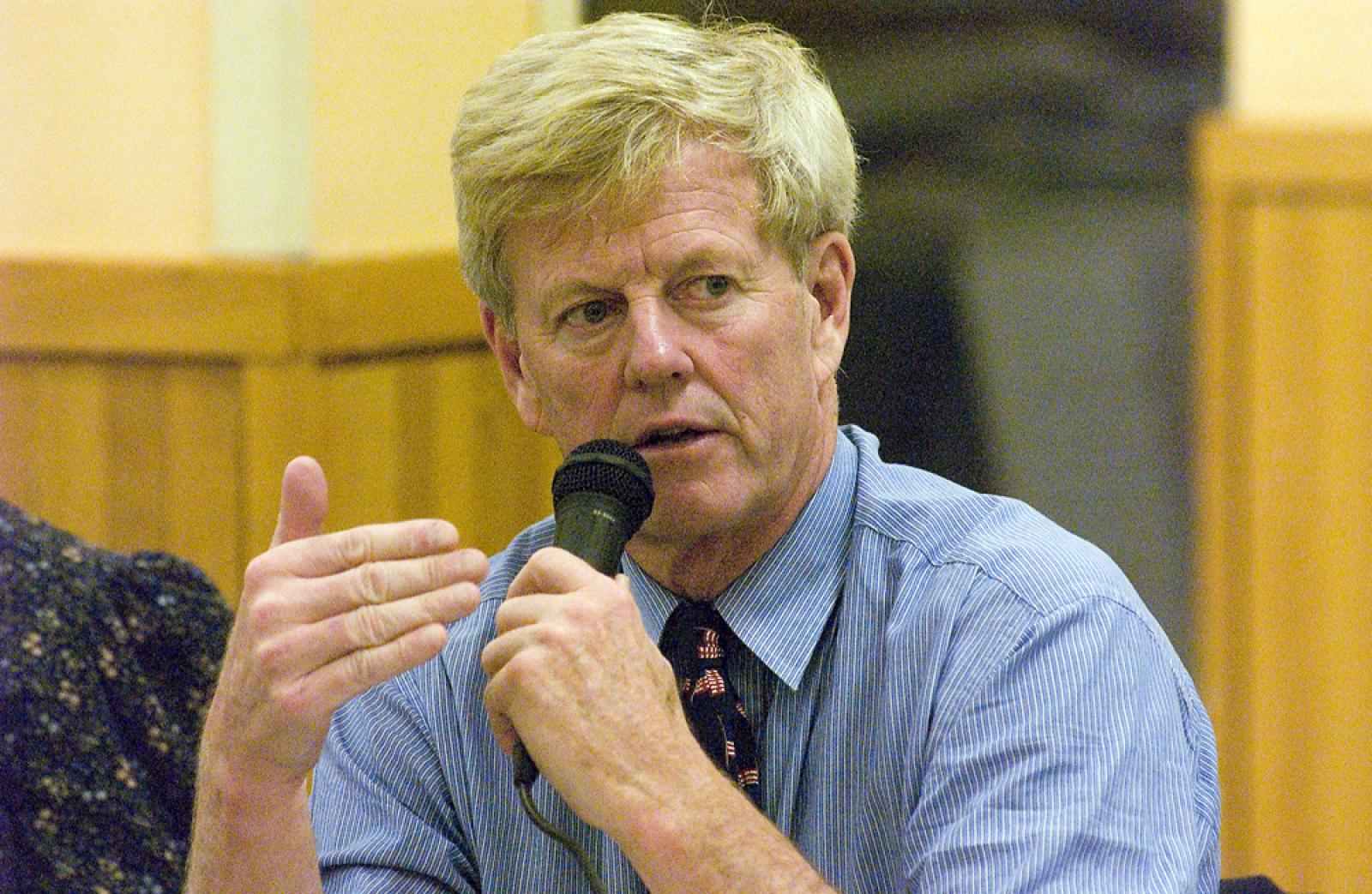A major wind turbine development near the Vineyard is at best a stopgap measure, and the real energy future lies in federal waters, state energy and environmental officials told Islanders this week.
“The state’s interest, long-term is not in state water,” Deerin Babb-Brott, one of the senior bureaucrats driving the state oceans plan, told local community leaders at a public meeting at the regional high school Wednesday night. The interest is in federal water, at the extreme limit of visibility, or completely over the horizon, he said.
In a frank assessment of the forces driving the potential development of large-scale wind generation within a few miles of the Island, he said those forces were primarily limits to technology and long lead times for development in federal waters.
His words offered faint hope to Vineyarders who are up in arms about the state’s draft oceans plan, now expected to be approved by the end of the year.
Mr. Babb-Brott, assistant secretary for Ocean and Coastal Zone management with the state’s Executive Office of Energy and Environmental Affairs, also announced the formation of a state and federal task force to begin preparing for large-scale development of wind power in federal waters off the Massachusetts coast. The state has jurisdiction up to three miles offshore, then the federal government has jurisdiction.
He said the task force was established at the request of the U.S. Secretary of the Interior, Ken Salazar, and he said Island community leaders would soon receive letters seeking their participation in it.
The membership of the task force will include local, state, tribal and federal representatives, he said.
Also at the meeting, Cape and Islands Sen. Robert O’Leary said he and state Rep. Tim Madden planned to meet with the secretary of the EEOEA, Ian Bowles, to push for changes which they believe would strengthen the hand of local planners to regulate development in Vineyard waters.
Mr. Bowles, who is the chief architect of the oceans plans, did not attend the Wednesday night meeting.
Senator O’Leary said the original bill referred to wind developments of “appropriate scale” but that was not defined. One change would provide that the MVC, as the regional planning agency, would determine what appropriate scale was.
He said he also wanted any proposed development to be considered in light of its impact of viewsheds, a criterion largely ignored in the draft oceans plan, and that language be inserted to ensure consistency between regional plans and their regulations governing renewable energy developments.
And Mr. O’Leary wanted to ensure any mitigation fees from offshore developments would come back to the affected communities.
“I’m not suggesting that means the commission should be in a position to stop all projects. What we’re saying is the community ought to define what happens and what doesn’t happen,” he said.
The meeting was a follow-up session to a formal public hearing on the draft oceans plan held last month when over 100 Islanders turned out to rail against the plan, which singles out Cuttyhunk and Noman’s Land for building 166 large commercial wind turbines, and severely undermines the powers of the Martha’s Vineyard Commission to review them.
The gathering this time was smaller, the mood calmer. The focus was more on gleaning information than registering protest, although there still was some of that.
Much of Mr. Babb-Brott’s opening presentation related to the means by which the process selected just two small areas of ocean water in the entire state, both of them adjacent to the Vineyard, for commercial-scale wind generation.
Countering the suggestion that the decision had been purely political, he used detailed, layered maps to show how the plan was drafted. He said many factors came into play, including whale habitat, eelgrass beds, endangered birds, shipping lanes, controlled airspace, areas of heavy commercial fishing, lack of infrastructure to connect to the state power grid and others. And most importantly, wind speed and water depth.
Given current technology, the assistant secretary said, the state ruled out areas where the water was deeper than 30 metres. Most of the relatively few areas north of Cape Cod which were not too deep lacked sufficient wind, or were too small for commercial-scale operations, he said.
Through a process of elimination based on scientific data of one kind or another, it came down to the two areas in Vineyard waters.
Mr. Babb-Brott also addressed another often-voiced complaint about the oceans plan — that it had not given sufficient consideration to siting wind generators in federal waters.
He said timing was a critical issue due to a state mandate to meet 20 per cent of its power needs from renewable sources by 2020. The technology to develop deepwater wind was at least a decade away. And the federal leasing process currently took at least six years, sometimes eight. The state believed it could do it much faster, in just two or three years, he said.
Mr. Babb-Brott also was contrite, repeatedly conceding various inadequacies in the state’s consultation with various stakeholders on the Island.
He promised the state was not about to “ram a project down the throat of a community that doesn’t want it,” and said he envisioned extensive further consultation with the Island.
But some said it was too little, too late, including Chris Murphy, vice chairman of the MVC.
While the oceans plan had done some good work, “It’s truly disrespected Martha’s Vineyard in every possible way,” he said. “We weren’t included in the beginning, the middle and now, at the very end it’s ‘hey jump on board or we’re going to run you over.’
“I think until you’re willing to say, no matter what happens the local community has the last word and if they’re not happy with the project it won’t go forward, then you’re never going to get the kind of support you need to make this work.”







Comments (5)
Comments
Comment policy »